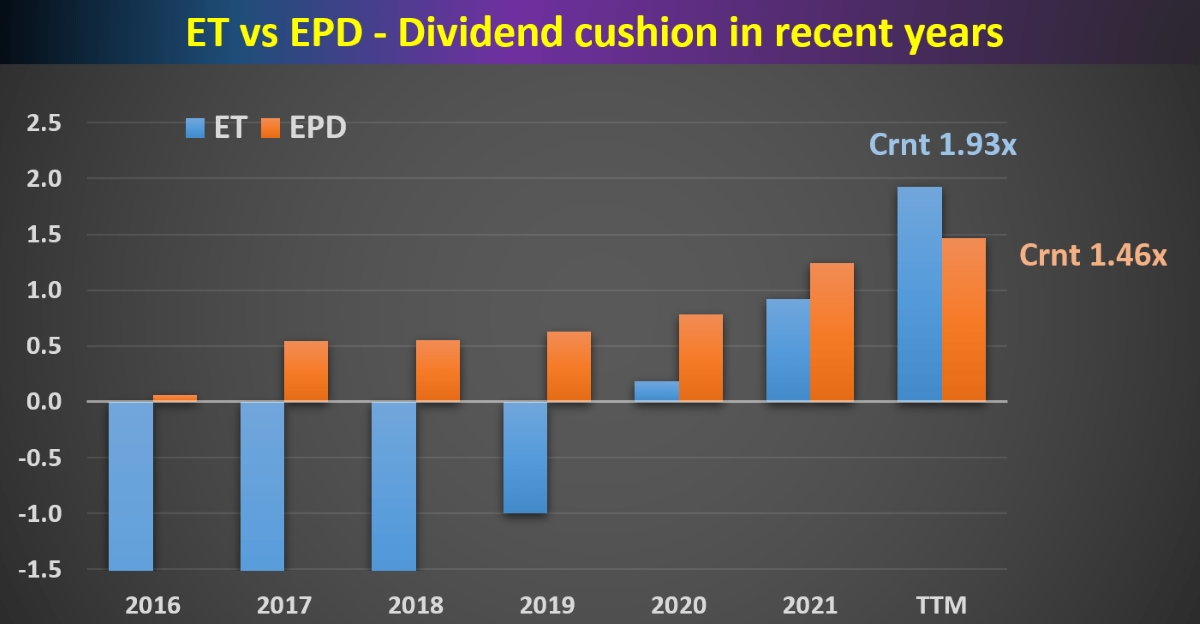Home>Finance>How Do Credit Card Companies Calculate Minimum Payment


Finance
How Do Credit Card Companies Calculate Minimum Payment
Published: February 25, 2024
Learn how credit card companies calculate minimum payments and manage your finances effectively with this comprehensive guide. Understand the key factors and make informed decisions.
(Many of the links in this article redirect to a specific reviewed product. Your purchase of these products through affiliate links helps to generate commission for LiveWell, at no extra cost. Learn more)
Table of Contents
Introduction
Credit cards are a ubiquitous financial tool in today's world, offering convenience and flexibility for making purchases and managing expenses. However, it's crucial for cardholders to understand the various aspects of credit card usage, including the calculation of minimum payments. While credit cards can provide short-term financial flexibility, they also come with the responsibility of making timely payments to avoid accruing excessive interest and debt.
Understanding how credit card companies calculate minimum payments is essential for maintaining healthy financial habits and avoiding potential pitfalls. In this comprehensive guide, we will delve into the intricacies of minimum payments, exploring the factors considered by credit card companies, the calculation methods employed, and the impact of making minimum payments. Additionally, we will provide valuable tips for effectively managing credit card minimum payments to help individuals navigate the complexities of credit card usage and debt management.
By gaining insight into the inner workings of minimum payments and their implications, cardholders can empower themselves to make informed financial decisions and take control of their credit card obligations. Whether you're a seasoned credit card user or just starting to build your credit history, understanding the nuances of minimum payments is fundamental to maintaining financial well-being and achieving long-term stability. Let's embark on this enlightening journey to unravel the mystery behind credit card minimum payments and equip ourselves with the knowledge needed to navigate the world of credit with confidence and prudence.
Understanding Minimum Payments
Minimum payments represent the lowest amount that credit card holders must pay each month to keep their accounts in good standing. While the concept of minimum payments may seem straightforward, their implications and significance in managing credit card debt warrant a closer examination.
When cardholders make only the minimum payment, they are essentially covering the interest accrued and a small portion of the principal balance. This practice can lead to a prolonged repayment period and substantial interest costs, ultimately impeding the ability to achieve financial freedom. Understanding the dynamics of minimum payments is crucial for individuals aiming to make informed decisions about their financial well-being.
By comprehending the role of minimum payments in the context of credit card debt, individuals can gain a deeper appreciation for the impact of their repayment choices. Moreover, understanding the implications of making minimum payments empowers cardholders to take proactive steps in managing their credit card obligations and mitigating the long-term financial consequences of accrued interest and prolonged debt repayment.
As we delve further into the intricacies of minimum payments, we will explore the factors that credit card companies consider when determining these amounts, shedding light on the underlying principles that shape this crucial aspect of credit card usage. By unraveling the complexities of minimum payments, individuals can equip themselves with the knowledge needed to navigate the terrain of credit card debt with prudence and foresight, ultimately fostering a healthier financial outlook.
Factors Considered by Credit Card Companies
When credit card companies calculate minimum payments, they take into account several key factors that influence the amount cardholders are required to pay each month. Understanding these factors is essential for individuals seeking to grasp the rationale behind minimum payment calculations and their implications for managing credit card debt.
One of the primary considerations is the outstanding balance on the credit card. The minimum payment is often calculated as a percentage of this balance, typically ranging from 1% to 3% of the total amount owed. Additionally, credit card companies factor in the accrued interest and any fees or charges incurred during the billing cycle when determining the minimum payment amount.
Furthermore, some credit card issuers may impose a minimum fixed amount as the monthly payment, ensuring that cardholders make substantial progress in repaying their balances over time. This fixed minimum payment serves as a safeguard against prolonged debt repayment and helps mitigate the risk of perpetually accruing interest charges.
Another crucial aspect considered by credit card companies is the cardholder’s credit history and payment behavior. Individuals with a history of late payments or defaulting on their credit card obligations may be subject to higher minimum payment requirements as a risk management measure for the issuer. Conversely, responsible payment behavior and a positive credit history may contribute to lower minimum payment obligations, reflecting the cardholder’s creditworthiness and financial reliability.
By understanding the interplay of these factors in determining minimum payments, cardholders can gain valuable insights into the mechanisms shaping their credit card obligations. This knowledge empowers individuals to make informed decisions regarding their financial management, fostering a proactive approach to credit card usage and debt repayment.
Calculation of Minimum Payments
The calculation of minimum payments by credit card companies involves a multifaceted approach that takes into consideration various financial elements. Typically, the minimum payment is determined based on a combination of the outstanding balance, accrued interest, and a predetermined percentage of the total amount owed.
One common method for calculating minimum payments is to set a percentage of the outstanding balance, often ranging from 1% to 3% of the total amount owed. This approach ensures that the minimum payment adjusts in proportion to the fluctuating balance, aligning with the cardholder’s current level of indebtedness. By tying the minimum payment to a percentage of the outstanding balance, credit card companies aim to provide a degree of flexibility while ensuring that cardholders make tangible progress in repaying their debts.
Additionally, credit card companies factor in the accrued interest during the billing cycle when determining the minimum payment amount. This interest component reflects the cost of carrying a balance on the credit card and contributes to the overall minimum payment obligation. As a result, the minimum payment encompasses both the interest charges and a portion of the principal balance, albeit at a minimal level.
Moreover, some credit card issuers may impose a minimum fixed amount as the monthly payment, ensuring that cardholders make substantial strides in repaying their balances over time. This fixed minimum payment serves as a safeguard against prolonged debt repayment and helps mitigate the risk of perpetually accruing interest charges, offering a structured approach to debt reduction.
By understanding the methodology behind the calculation of minimum payments, cardholders can gain clarity on the factors shaping their monthly obligations. This insight enables individuals to assess the implications of making minimum payments and evaluate their repayment strategies, fostering a proactive and informed approach to managing credit card debt.
Impact of Making Minimum Payments
Making minimum payments on credit card balances can have far-reaching implications for cardholders’ financial well-being, influencing their debt management and long-term financial stability. While minimum payments offer a temporary reprieve by satisfying the basic requirement to keep the account in good standing, their impact on overall debt repayment and interest accumulation warrants careful consideration.
One significant consequence of consistently making minimum payments is the prolonged repayment period. By only covering a small portion of the principal balance, cardholders extend the time required to pay off their debts, potentially leading to years of ongoing payments and substantial interest costs. This protracted repayment timeline can hinder individuals’ ability to achieve financial freedom and may perpetuate a cycle of debt accumulation.
Furthermore, the cumulative interest incurred when making minimum payments can substantially inflate the total cost of the debt. As interest continues to accrue on the remaining balance, cardholders may find themselves paying a significant amount in interest charges over the course of their repayment journey, detracting from their financial resources and impeding their progress toward debt reduction.
In addition, making minimum payments can impact individuals’ credit utilization ratio, a key factor in determining credit scores. By maintaining high balances relative to their credit limits and consistently making minimum payments, cardholders may inadvertently lower their credit scores, potentially affecting their access to favorable credit terms and financial opportunities in the future.
Understanding the impact of making minimum payments underscores the importance of proactive debt management and strategic repayment practices. By evaluating the long-term implications of minimum payments, individuals can make informed decisions about their financial priorities and develop effective strategies for debt reduction, ultimately fostering a healthier financial outlook and greater control over their credit card obligations.
Tips for Managing Credit Card Minimum Payments
Effectively managing credit card minimum payments is essential for maintaining financial stability and mitigating the long-term impact of credit card debt. By adopting strategic approaches to minimum payments, individuals can navigate their credit card obligations with greater confidence and control. Here are valuable tips for managing credit card minimum payments:
- Pay More Than the Minimum: Whenever possible, strive to pay more than the minimum amount due. By allocating additional funds toward your credit card payments, you can expedite debt repayment, reduce interest costs, and accelerate your journey toward financial freedom.
- Create a Repayment Plan: Develop a structured repayment plan that outlines your goals for reducing credit card debt. Consider prioritizing high-interest balances or utilizing debt repayment strategies such as the snowball or avalanche methods to systematically pay off your debts.
- Monitor Your Spending: Keep a close eye on your spending habits and strive to maintain a budget that aligns with your financial goals. By exercising prudence in your expenditures, you can minimize the accumulation of new credit card debt and alleviate the pressure on minimum payments.
- Seek Lower Interest Rates: Explore opportunities to lower your credit card interest rates, such as transferring balances to cards with introductory 0% APR offers or negotiating with your current card issuer for reduced rates. Lower interest charges can make a meaningful difference in managing minimum payments and overall debt repayment.
- Utilize Windfalls and Bonuses: Whenever you receive unexpected funds, such as tax refunds, bonuses, or cash windfalls, consider allocating a portion toward your credit card payments. These additional contributions can significantly impact your debt reduction efforts and alleviate the burden of minimum payments.
- Communicate with Your Issuer: If you encounter financial challenges that affect your ability to make minimum payments, communicate with your credit card issuer proactively. They may offer hardship programs or alternative payment arrangements to help you navigate temporary financial difficulties.
- Consider Credit Counseling: Seeking guidance from reputable credit counseling services can provide valuable insights into debt management strategies and financial planning. Professional counselors can offer tailored advice to assist you in effectively managing your credit card minimum payments and overall financial well-being.
By implementing these tips and adopting a proactive approach to managing credit card minimum payments, individuals can take control of their financial obligations, reduce the impact of credit card debt, and work toward achieving greater financial freedom and stability.
Conclusion
Understanding the intricacies of credit card minimum payments is paramount for individuals navigating the realm of credit card usage and debt management. By delving into the factors considered by credit card companies, the calculation methods employed, and the impact of making minimum payments, individuals can gain valuable insights into the dynamics of credit card debt and empower themselves to make informed financial decisions.
It is evident that making only the minimum payments on credit card balances can lead to prolonged repayment periods, substantial interest costs, and potential implications for credit scores. However, by adopting strategic approaches to managing minimum payments, such as paying more than the minimum, creating structured repayment plans, and seeking lower interest rates, individuals can take proactive steps toward effective debt reduction and financial stability.
Ultimately, the journey toward managing credit card minimum payments involves a combination of financial acumen, prudent decision-making, and a proactive mindset. By leveraging the tips provided in this guide and maintaining a clear understanding of the implications of minimum payments, individuals can navigate their credit card obligations with confidence and work toward achieving long-term financial well-being.
Empowered with the knowledge gained from this exploration of credit card minimum payments, individuals can embark on a path toward greater financial control, reduced debt burdens, and a heightened sense of financial security. By applying the insights and strategies outlined in this guide, individuals can pave the way for a more stable and prosperous financial future.














